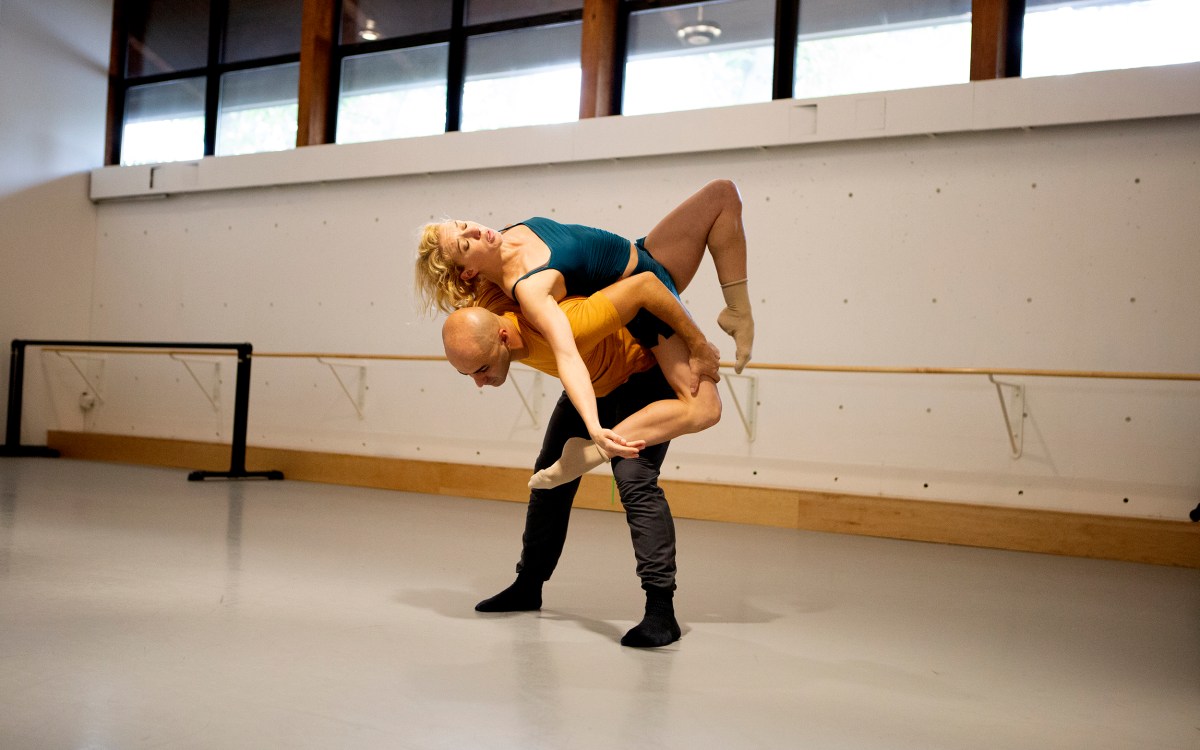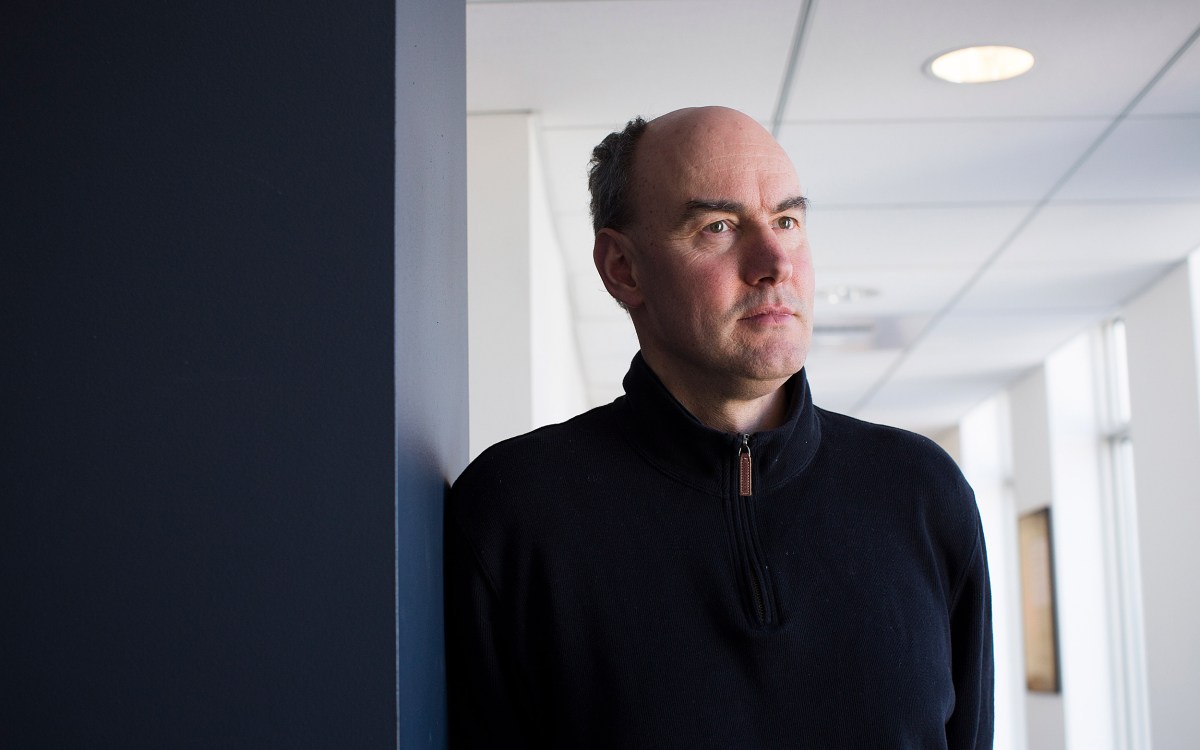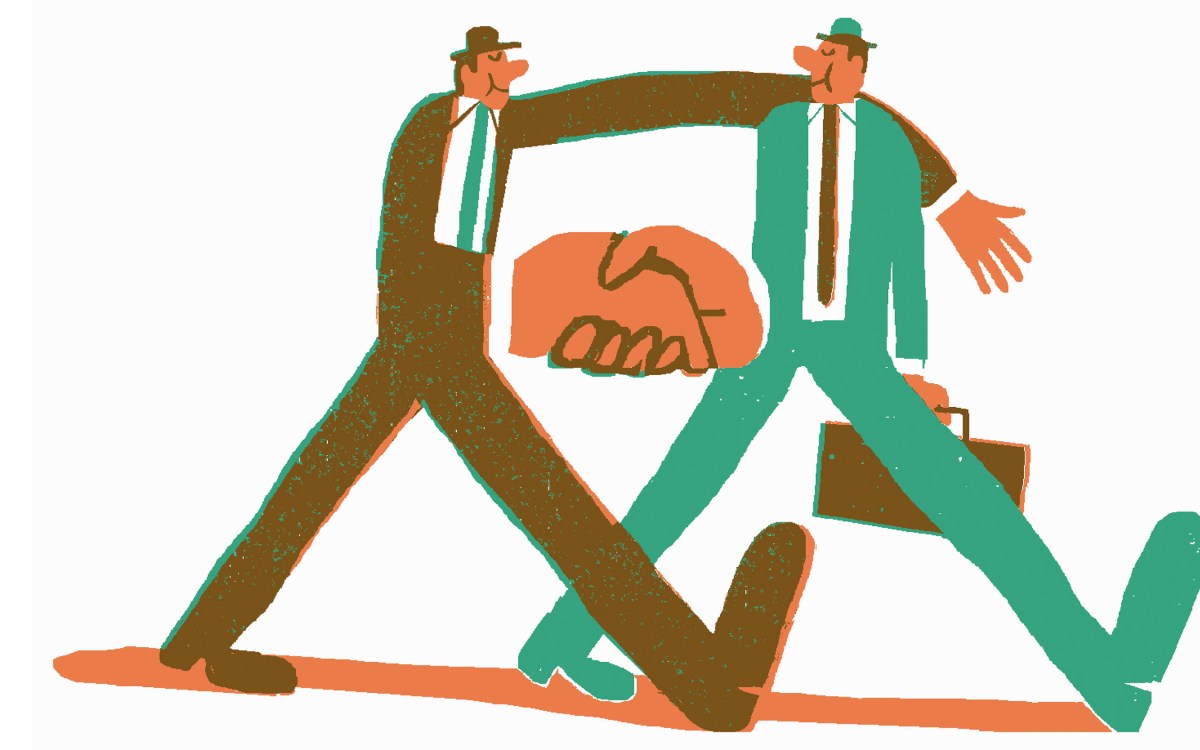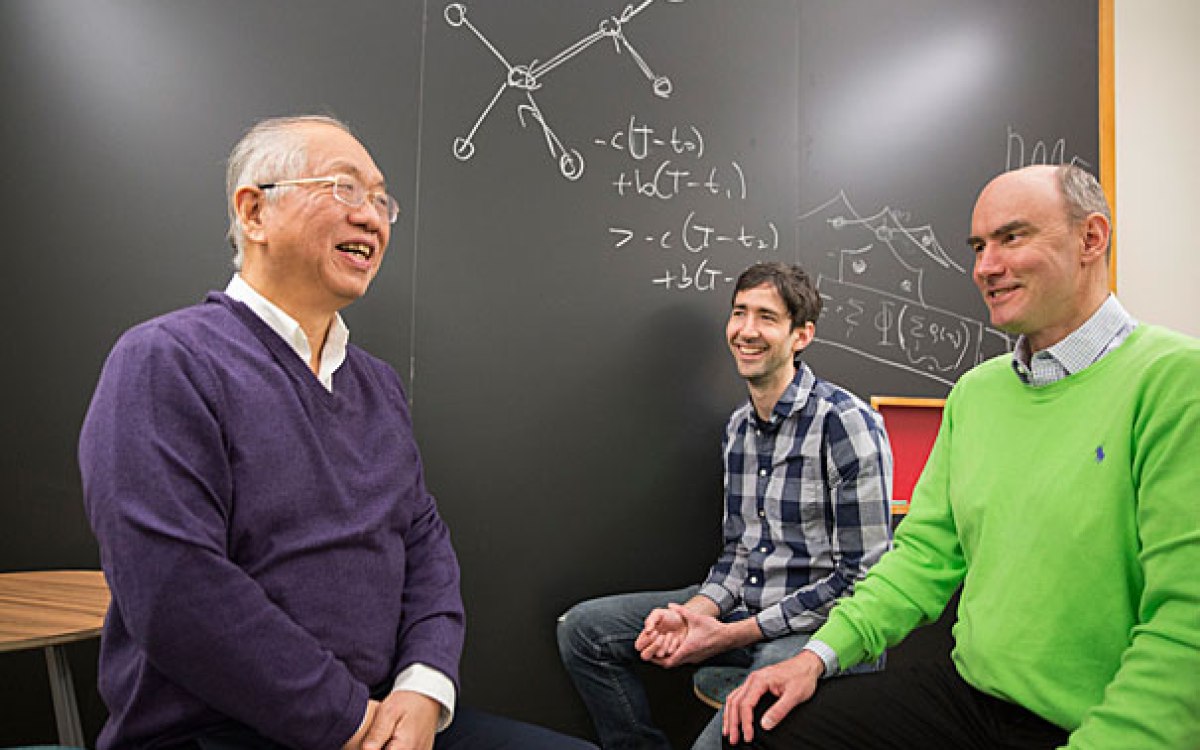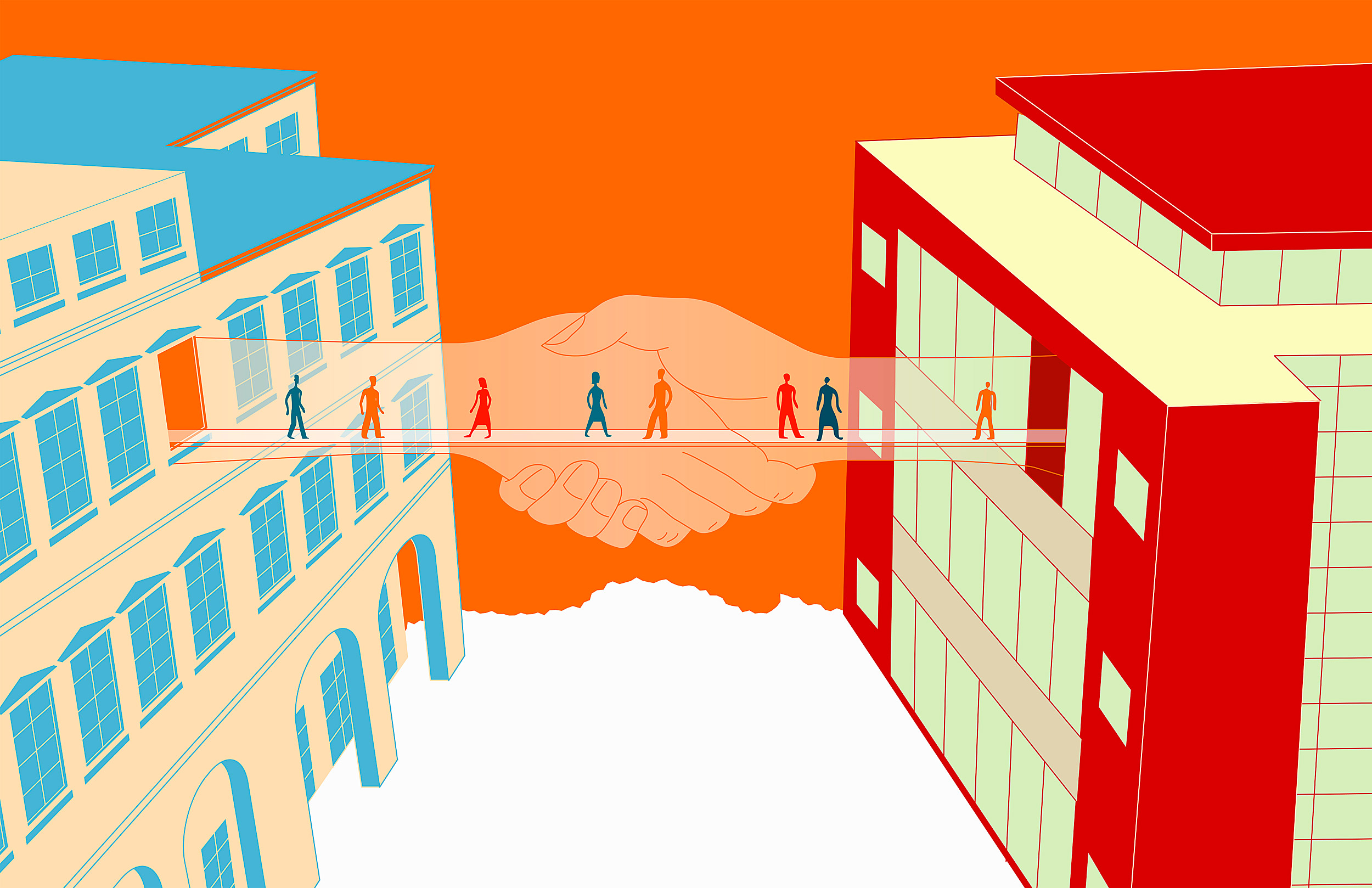
“What the paper shows is that, in certain organizational settings, if people can span boundaries and connect distinct units, they can facilitate cooperation,” said Babak Fotouhi.
Illustration by Otto Steininger
Correcting a lack of cooperation
Study shows that building bridges can foster working together better
When it comes to cooperation, science has shown, not all social networks are created equal.
While some have been shown to intrinsically lead to cooperation, other studies have suggested that certain structures not only lead to a breakdown in cooperation, they can produce outright spite.
But even in those most extreme cases, Harvard researchers say, it still may be possible to come back from the brink.
If those noncooperating communities can be loosely connected to each other or to larger social networks, it is possible for cooperation to emerge, according to a study co-authored by Babak Fotouhi, a postdoctoral fellow in mathematical biology, and Martin Nowak, professor of mathematics and of biology and director of the Program for Evolutionary Dynamics. The study is described in a paper published earlier this year in Nature Human Behavior.
In addition to Fotouhi and Nowak, the study’s authors include MIT researcher Naghmeh Momeni and Benjamin Allen from Emmanuel College.
“What the paper shows is that, in certain organizational settings, if people can span boundaries and connect distinct units, they can facilitate cooperation,” Fotouhi said. “I think the way to look at it is that our study shows how structure is essential in promoting collective cooperation, and shows how certain structures can be significantly ameliorated with minor changes.
“By itself, this is an important idea,” he continued. “But now we can look at different, specific contexts and see how the structure and how structural modifications can lead to various outcomes.”
That finding, Nowak said, came as a surprise.
“In 2017, we published a paper that gave us the mathematical tools to calculate whether a population structure intrinsically supported cooperation,” he said. “And the interesting thing we found was that very dense structures not only opposed cooperation, but could promote spite.
“But Babak made this observation that if we had two very dense clusters, and we connected them … then what happens is the whole structure is no longer dense,” he continued. “So this shows the essential role of intergroup ties.”
While the paper suggests that building connections between groups could foster cooperation, both Fotouhi and Nowak admitted that such cooperation may not always be beneficial.
“This suggests that if you take white supremacists and extreme right-wing groups and connect them, they will cooperate with each other,” Nowak said. “If these groups were connected back to the larger society, that would be beneficial overall, but if they are isolated and connected to each other, that actually could be dangerous.”
While the study’s findings could be applied to a wide array of social structures and groups, Fotouhi emphasized that the work was aimed not at any single group, but at understanding the overall structure of cooperation.
“This model is agnostic to content of cooperation,” he said. “What I would say is we have described the form of cooperation, but not the content. We did think of those other, important implications, and I think this paper points to some interesting questions that can be asked in some very important contexts.”
Going forward, Fotouhi said, the hope is that researchers can use the framework described in the paper to examine how additional factors — like the speed of information diffusion or political partisanship — might impact the evolution of cooperation.
“There are different contexts where you can take this methodology and apply it to that context,” he said. “I think this paper raises a number of questions … that we can now begin to explore with experimental investigations.”
This research was supported with funding from the James S. McDonnell Foundation, the National Science Foundation, and the John Templeton



